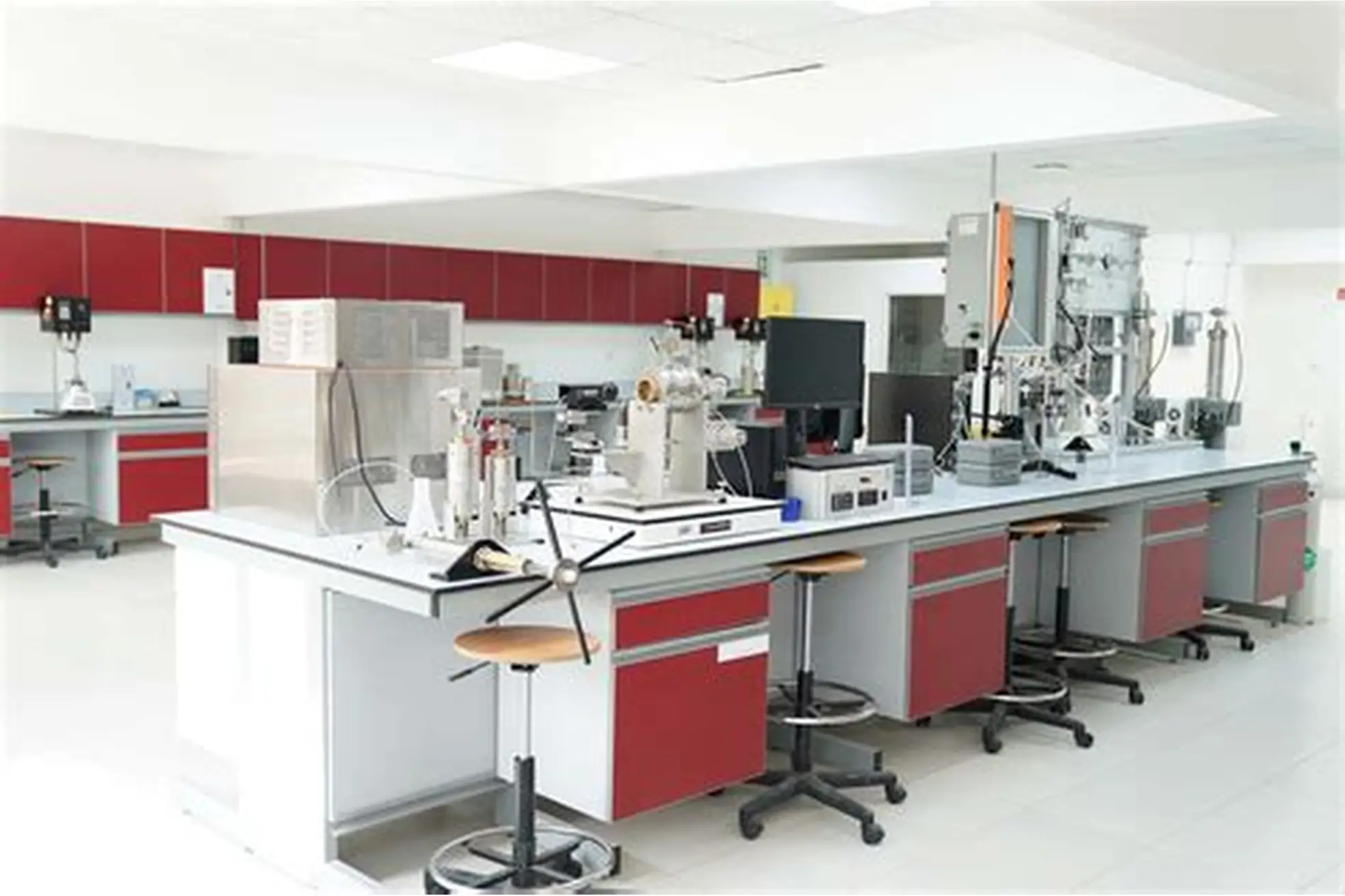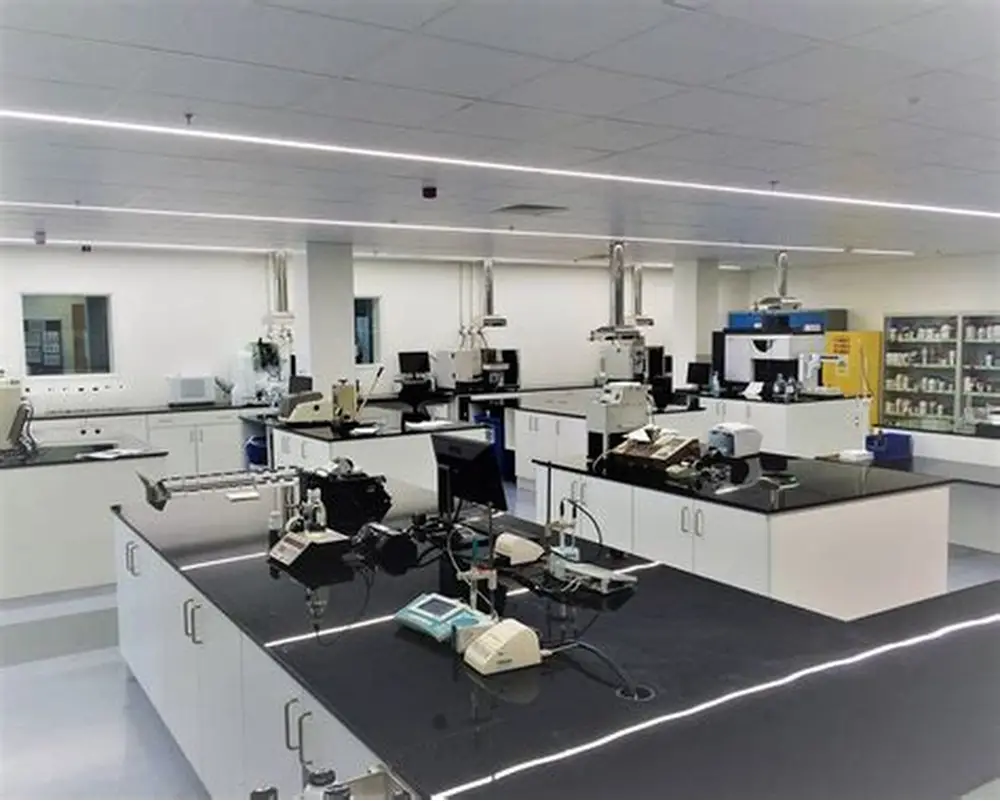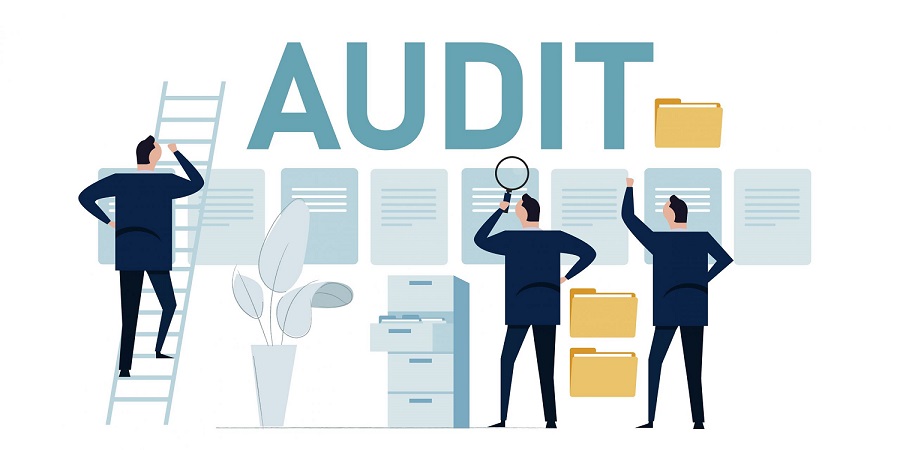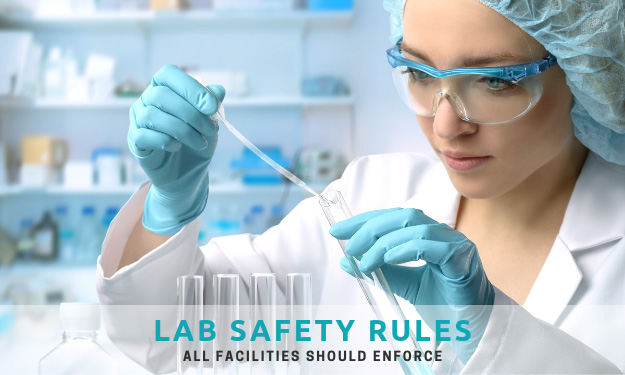ISO 17025 laboratory quality management system
ISO 17025 laboratory quality management system is the international standard that specifies the general requirements for the competence, impartiality, and consistent operation of laboratories. It is applicable to all organizations performing laboratory activities, regardless of the number of personnel. The implementation of ISO 17025 ensures the accuracy, repeatability, and traceability of laboratory results, aligning with the needs of stakeholders and regulatory bodies.
This article provides a comprehensive overview of ISO 17025 implementation, documentation, procedures, technical examples (such as F-test, t-test, control charts, and Cg/Cgk calculations), and the structure of a laboratory quality management system.
Impartiality in Laboratory Operations
Impartiality is a core principle of ISO/IEC 17025:2017 and is critical to maintaining the integrity and credibility of laboratory results. Laboratories must identify, eliminate, or manage risks to impartiality arising from commercial, financial, organizational, or personal influences.
ISO 17025 mandates that all personnel involved in testing or calibration activities act free from undue pressure that could compromise the objectivity of their work. Laboratories are required to document their impartiality policy, conduct regular risk assessments, and ensure that structural and operational safeguards are in place to prevent conflicts of interest. These may include establishing independent reporting lines, maintaining transparency in decision-making processes, and avoiding any activities that could undermine trust in the laboratory’s results. Demonstrating impartiality reinforces customer confidence, supports accreditation, and ensures the laboratory’s compliance with international best practices.
Confidentiality Description in ISO/IEC 17025
Confidentiality is a fundamental requirement under ISO/IEC 17025 to ensure that all information obtained or generated by the laboratory during testing, calibration, and related activities is protected against unauthorized disclosure.
The laboratory commits to safeguarding the confidentiality of client information, including test results, calibration data, and any proprietary or sensitive information provided by clients or generated during the course of laboratory operations.
This confidentiality obligation applies to all personnel, contractors, and any parties involved with the laboratory’s activities. The laboratory shall implement policies and procedures to prevent unauthorized access to confidential information through appropriate physical, electronic, and procedural controls.
The laboratory shall only disclose information to third parties with the explicit consent of the client or as required by law or regulatory authority. In cases where disclosure is mandatory, the laboratory shall notify the client where permissible.
Maintaining confidentiality supports the impartiality and integrity of the laboratory’s testing and calibration results, thereby upholding client trust and compliance with contractual and regulatory requirements.

Structure of ISO/IEC 17025:2017
The ISO/IEC 17025:2017 standard is organized into five major sections, each of which outlines critical requirements for laboratory competence and quality management. These clauses form the foundation for establishing and maintaining an effective and internationally recognized laboratory system.
General Requirements
This section addresses the principles of impartiality and confidentiality, which are fundamental to the credibility and trustworthiness of laboratory activities. Laboratories must:
-
Operate impartially without internal or external pressure that could compromise the integrity of results.
-
Identify and manage risks to impartiality.
-
Safeguard confidential information, including proprietary and customer data, through secure and controlled processes.
Structural Requirements
Structural requirements ensure that the laboratory operates as a legally identifiable entity with a defined management structure. These requirements include:
-
Clearly defined organizational roles and responsibilities.
-
Adequate supervision of laboratory activities by competent personnel.
-
Independence of personnel from commercial, financial, or other pressures that could affect technical judgments.
-
Availability of documentation that defines the organizational structure, key functions, and reporting relationships.
Resource Requirements
This clause focuses on the need for sufficient and suitable resources to support valid results. The key resource elements include:
-
Personnel: Individuals must be competent based on education, training, skills, and experience. Laboratories must maintain training records and evaluate staff competency regularly.
-
Facilities and Environmental Conditions: Environmental factors such as temperature, humidity, and cleanliness must be controlled to prevent invalid results.
-
Equipment: Instruments must be suitable for intended purposes, calibrated, maintained, and uniquely identified.
-
Metrological Traceability: Measurements must be traceable to the International System of Units (SI) or recognized reference standards.
-
Externally Provided Products and Services: Materials and services procured from external suppliers must meet quality criteria and be evaluated for compliance.
Process Requirements
Process requirements encompass all operational steps that influence the integrity of test and calibration results. This section outlines:
-
Review of Requests and Contracts: Ensuring clarity in client requirements before acceptance.
-
Method Selection, Verification, and Validation: Use of standard methods where possible and thorough validation of non-standard or modified methods.
-
Sampling and Handling of Test Items: Procedures must prevent contamination, mix-ups, or deterioration.
-
Technical Records: Clear and traceable documentation of procedures, raw data, and calculations.
-
Measurement Uncertainty: Quantifying uncertainty is critical to interpreting results.
-
Assuring the Validity of Results: Implementing statistical techniques like control charts, repeatability studies, and proficiency testing.
-
Reporting of Results: Reports must be accurate, clear, objective, and timely.
-
Handling of Complaints, Nonconforming Work, and Data Integrity: Systems must be in place for corrective action and traceability.
Management System Requirements
The final section of the standard offers laboratories the option of adopting a management system based on ISO 9001 principles. This clause includes:
-
Quality Policy and Objectives: The policy must be appropriate to the purpose of the laboratory and include commitments to compliance and continual improvement.
-
Leadership and Organizational Planning: Top management is responsible for the effective functioning of the management system.
-
Risk-Based Thinking: Risks to impartiality, result validity, and customer satisfaction must be identified and mitigated.
-
Corrective Actions and Continual Improvement: Nonconformities must be documented and resolved systematically.
-
Management Review and Internal Audit: These are required to assess the continued suitability, adequacy, and effectiveness of the system.
-
Control of Documents and Records: Documentation must be controlled for accuracy, currency, and accessibility.
Key Components of ISO 17025 Quality Management System Implementation
Method Selection, Verification, and Validation
Laboratories must select appropriate test methods and validate non-standard or modified methods. Validation techniques include:
-
F-test for comparing method precision: A comparative test of two variances to assess repeatability. For example, comparing variance of old vs. new method results for tensile strength.
-
t-test for accuracy assessment: Used to compare the mean result from a method against a reference or target value, useful in validating a new analytical method.
-
Linearity evaluation: Ensures that the response of an instrument or method is directly proportional to the analyte concentration over a defined range.
-
Cg and Cgk performance capability calculations: These are capability indices used to evaluate the precision and centering of measurement systems.
Example Table:
| Characteristic | Tolerance | Standard Deviation (s) | Cg | Cgk |
|---|---|---|---|---|
| Diameter | 10 ±0.1 | 0.005 | 3.33 | 2.91 |
ANOVA (Analysis of Variance)
Useful when comparing means of more than two groups—e.g., results from three technicians or instruments.
Sample Use Case: Testing whether temperature variation across three chambers significantly affects measurements.
Measurement Uncertainty
Measurement uncertainty must be evaluated, documented, and reviewed periodically. It combines various sources of error to express the range within which the true value is believed to lie.
Typical Sources of Uncertainty Include:
-
Instrument resolution
-
Calibration uncertainty
-
Environmental effects
-
Repeatability
-
Operator variability
Example Uncertainty Budget Table:
| Source of Uncertainty | Type (A/B) | Value (±) | Distribution | Divisor | Standard Uncertainty |
|---|---|---|---|---|---|
| Balance resolution | B | 0.01 g | Rectangular | √3 | 0.0058 g |
| Temperature effect | B | 0.03 g | Rectangular | √3 | 0.0173 g |
| Repeatability (SD) | A | 0.02 g | Normal | 1 | 0.02 g |
| Combined Standard Uncertainty | 0.035 g |
Assurance of Test Result Validity
Laboratories must ensure continuous control over the validity of results.
Applicable Techniques Include:
-
Internal Quality Control (IQC): Routine analysis of control samples.
-
Repeatability and Reproducibility Tests: E.g., performing the same test multiple times by the same/different operator.
-
Interlaboratory Comparison (ILC): Comparing results with other labs to assess consistency.
-
Proficiency Testing (PT): Formal external evaluation by certified providers.
-
Control Charts (e.g., X-bar, R): Used to monitor statistical stability.
-
Intermediate Checks: Periodic verification of equipment during use.
Sample Control Chart:
| Test Date | Mean Result | Upper Limit | Lower Limit | Status |
|---|---|---|---|---|
| 01/06/25 | 9.98 | 10.10 | 9.90 | In control |
| 02/06/25 | 10.04 | 10.10 | 9.90 | In control |
| 03/06/25 | 10.15 | 10.10 | 9.90 | Outlier |
Metrological Traceability
All measurement results must be traceable to SI units or recognized standards.
Requirements:
-
Calibration by accredited laboratories with traceable standards
-
Clear identification of reference materials
-
Calibration certificates must include:
-
Uncertainty values
-
Reference to SI units
-
Environmental conditions
-
Date and validity period
-
Example Table: Traceability Record
| Equipment | Calibrated By | Date | Next Due | Uncertainty | SI Unit Reference |
|---|---|---|---|---|---|
| Digital Caliper | Accredited Lab X | 2025-03-01 | 2026-03-01 | ±0.01 mm | mm |

Documentation for ISO 17025 Compliance
Quality Manual for ISO/IEC 17025:2017
The Quality Manual is a top-level, controlled document that comprehensively outlines the structure, policies, procedures, and responsibilities of the laboratory’s quality management system as required by ISO/IEC 17025:2017. It serves as a strategic and operational reference for both internal laboratory personnel and external auditors, demonstrating how the laboratory ensures technical competence and the generation of valid, reliable results.
The manual includes descriptions of how the laboratory meets requirements for impartiality, confidentiality, document control, corrective actions, customer satisfaction, internal audits, and continual improvement. It also addresses compliance with statutory and regulatory requirements, communication with stakeholders, calibration and maintenance of equipment, and traceability of measurements.
As a living document, the quality manual is reviewed and updated regularly to reflect changes in operations, standards, and best practices, ensuring that the laboratory maintains conformity with ISO/IEC 17025:2017 and supports long-term performance excellence.
ISO 17025 Procedures
-
Quality management
-
Risk management
-
Internal audit
-
Nonconformance handling
-
Equipment calibration
-
Method validation
-
Uncertainty evaluation
Work Instructions
-
Operation of testing equipment
-
Sample handling
-
Use of reference materials
Forms and Records
-
Equipment maintenance log
-
Method validation record
-
Uncertainty worksheet
-
PT/ILC participation record
-
Quality control chart
-
Competency evaluation record
Accreditation and Certification
ISO 17025 accreditation is a formal recognition by accreditation bodies that a laboratory is competent to carry out specific tests or calibrations. Leading bodies include:
Role of ISO 17025 Consultants
ISO 17025 consultants provide expertise in:
-
Conducting gap analysis
-
Developing complete documentation toolkits
-
Performing method validation
-
Calculating measurement uncertainty
-
Training personnel
-
Preparing for accreditation audits
Process of Implementing a Laboratory Quality Management System
Implementing a laboratory quality management system (QMS) based on ISO/IEC 17025:2017 is a structured, step-by-step process. It ensures that all technical and managerial elements required for competent and reliable laboratory operations are established and maintained. Each phase is designed to align with the standard’s requirements and support regulatory, contractual, and customer expectations.
✅ Step 1: Initial Gap Analysis
Begin by conducting a comprehensive gap analysis to compare current laboratory practices with the detailed requirements of ISO/IEC 17025:2017. This review should cover both management system clauses (Clause 8) and technical clauses (Clauses 4–7). Use a clause-based checklist to identify:
-
Nonconformities or partial compliance
-
Areas needing documentation
-
Missing or inadequate technical controls
-
Risks to impartiality or traceability
The output of this step is a Gap Analysis Report that forms the basis of the implementation plan.
✅ Step 2: Management Commitment and Planning
Senior management must formally commit to the QMS by:
-
Allocating sufficient financial, human, and technical resources
-
Defining a Quality Policy and measurable objectives
-
Appointing a Quality Manager or responsible person
-
Approving an implementation project plan with phases, milestones, and responsibilities
Leadership commitment is critical to align organizational goals with the laboratory’s technical integrity and customer satisfaction.
✅ Step 3: Documentation Development
Develop and structure the required documentation, including:
-
Quality Manual: Overview of the QMS, structure, scope, and processes
-
Procedures: For document control, calibration, nonconforming work, risk management, etc.
-
Work Instructions: For test methods, sample handling, equipment use
-
Forms and Records: Templates to capture objective evidence (e.g., calibration records, competency evaluations, audit checklists)
Documentation should be version-controlled, accessible, and reviewed periodically.
✅ Step 4: Resource Evaluation and Competency Assurance
Ensure the laboratory is equipped with the necessary infrastructure and qualified personnel:
-
Assess facility conditions (temperature, humidity, cleanliness)
-
Verify equipment calibration and maintenance status
-
Establish competency criteria for all roles
-
Maintain records of training, qualification, and supervision
This step also includes assessing safety, security, and environmental controls.
✅ Step 5: Method Selection, Verification, and Validation
Laboratories must:
-
Identify and select appropriate standard test methods
-
Perform method verification for standardized methods
-
Conduct validation for non-standard, modified, or lab-developed methods
-
Use statistical tools such as F-test, t-test, linearity, repeatability, and reproducibility studies
-
Prepare method validation records and traceability documentation
✅ Step 6: Measurement Uncertainty and Risk Management
Each method must include an uncertainty budget based on:
-
Instrument resolution and calibration
-
Environmental factors
-
Operator influence
-
Standard/reference material uncertainty
In parallel, conduct a risk assessment to address:
-
Threats to impartiality
-
Operational risks
-
Regulatory or customer-related risks
Maintain documented risk treatment plans and review them periodically.
✅ Step 7: Internal Audit
Internal audits are a core requirement to evaluate the performance and conformity of the laboratory’s QMS with ISO/IEC 17025:2017.
-
Conduct audits using a structured internal audit checklist covering all clauses of the standard
-
Evaluate both management system elements and technical processes (e.g., method validation, equipment, sampling, reporting)
-
Assign trained internal auditors independent of the audited activities
-
Document findings, nonconformities, and opportunities for improvement
Audit results must be recorded in the Internal Audit Report, and follow-up actions tracked.
✅ Step 8: Management Review
Management reviews are conducted periodically (usually annually) to assess the continued suitability, adequacy, and effectiveness of the QMS.
Inputs include:
-
Internal audit results
-
Customer feedback and complaints
-
Nonconformities and corrective actions
-
Status of objectives and improvement initiatives
-
Resource needs and personnel competence
-
Changes that could affect the QMS
The output of the management review must include decisions and actions for continual improvement and must be documented.
✅ Step 9: Corrective Actions and Continual Improvement
Based on audit findings, complaints, or operational issues:
-
Document nonconformities using a controlled form
-
Perform root cause analysis using tools like 5-Why or Fishbone
-
Implement corrective actions with defined responsibilities and timelines
-
Evaluate effectiveness of actions and prevent recurrence
-
Promote a culture of continuous improvement through regular team engagement and review
✅ Step 10: External Assessment and Accreditation
Once the system is fully implemented and stable:
-
Submit an application to an ISO/IEC 17025-recognized accreditation body (e.g., UKAS, DAkkS, NACI, ANAB)
-
Provide required documentation: quality manual, procedures, audit reports, records, validation data
-
Undergo a Stage 1 audit (document review) and Stage 2 audit (on-site assessment)
Prepare thoroughly using mock audits and final checks to identify any gaps before the official assessment.
✅ Step 11: Post-Accreditation Monitoring
After achieving accreditation:
-
Conduct scheduled internal audits and management reviews
-
Update documentation and train staff on any procedural or standard changes
-
Monitor PT/ILC participation, measurement uncertainty updates, and equipment calibration
-
Address customer complaints and demonstrate continual improvement
-
Maintain communication with the accreditation body for surveillance and renewal audits

Description of the Certification Audit Process for ISO/IEC 17025 laboratory quality management system
The certification audit process for ISO/IEC 17025 is conducted by an accredited certification body to verify that the laboratory’s management system and technical operations comply with the requirements of the ISO/IEC 17025 standard. This audit assesses the laboratory’s competence to perform specific tests and calibrations with reliable and valid results.
Application and Document Review
The laboratory submits an application for certification along with documentation of its management system, including quality manuals, procedures, and records. The certification body reviews these documents to evaluate the laboratory’s readiness for the audit.
Stage 1 Audit (Pre-assessment or Documentation Review)
The certification auditor reviews the laboratory’s quality management system documentation, evaluates the implementation status, and identifies any gaps or areas needing improvement before the on-site audit.
Stage 2 Audit (On-site Assessment)
Auditors visit the laboratory to evaluate the effectiveness of the management system and the technical competence of personnel. This includes observation of testing/calibration activities, verification of equipment calibration and maintenance, review of records, and interviews with staff.
Nonconformity Reporting and Corrective Actions
Any nonconformities or areas of noncompliance found during the audit are documented. The laboratory is required to implement corrective actions and provide evidence of their effectiveness within an agreed timeframe.
Certification Decision
Based on the audit findings and corrective actions, the certification body makes a decision on granting certification. If successful, the laboratory receives an ISO/IEC 17025 certificate valid for a specified period (usually three years).
Surveillance Audits
Periodic surveillance audits are conducted (typically annually) to ensure continued compliance with ISO/IEC 17025 requirements and continual improvement of the laboratory management system.
Recertification Audit
Before the expiry of the certification, a full reassessment audit is conducted to renew the certificate.

